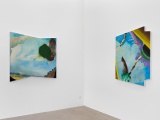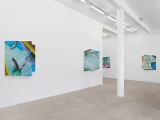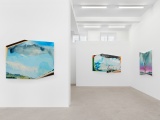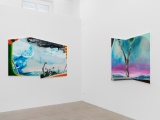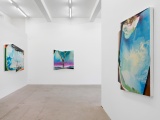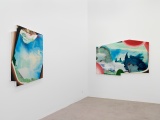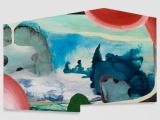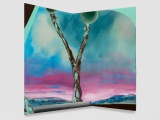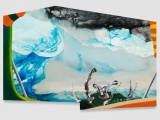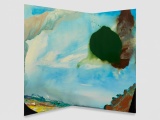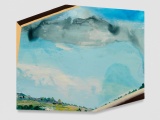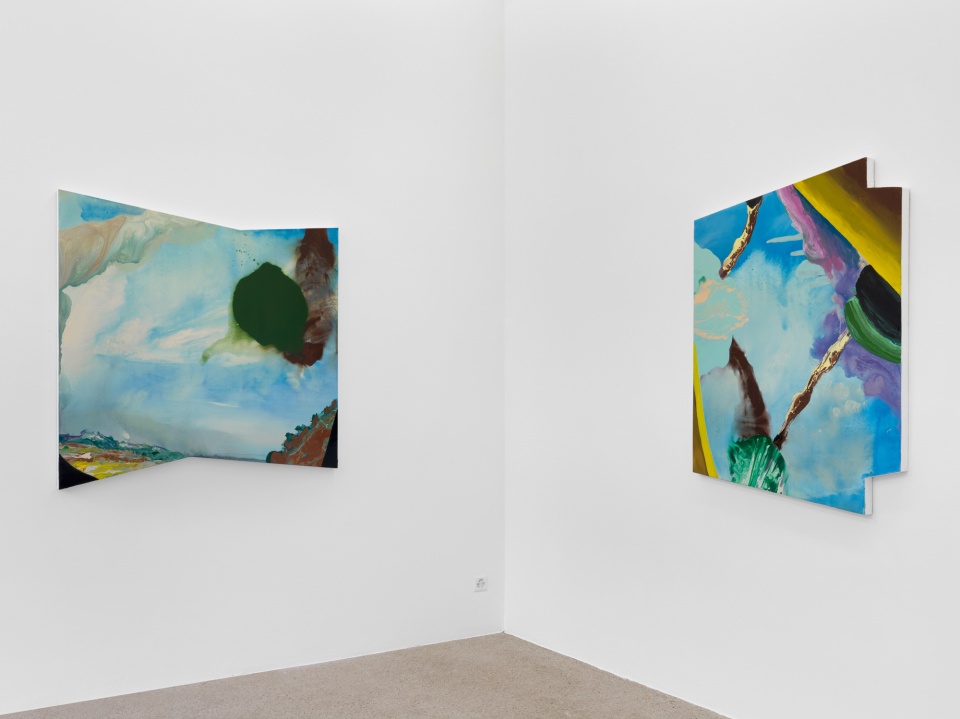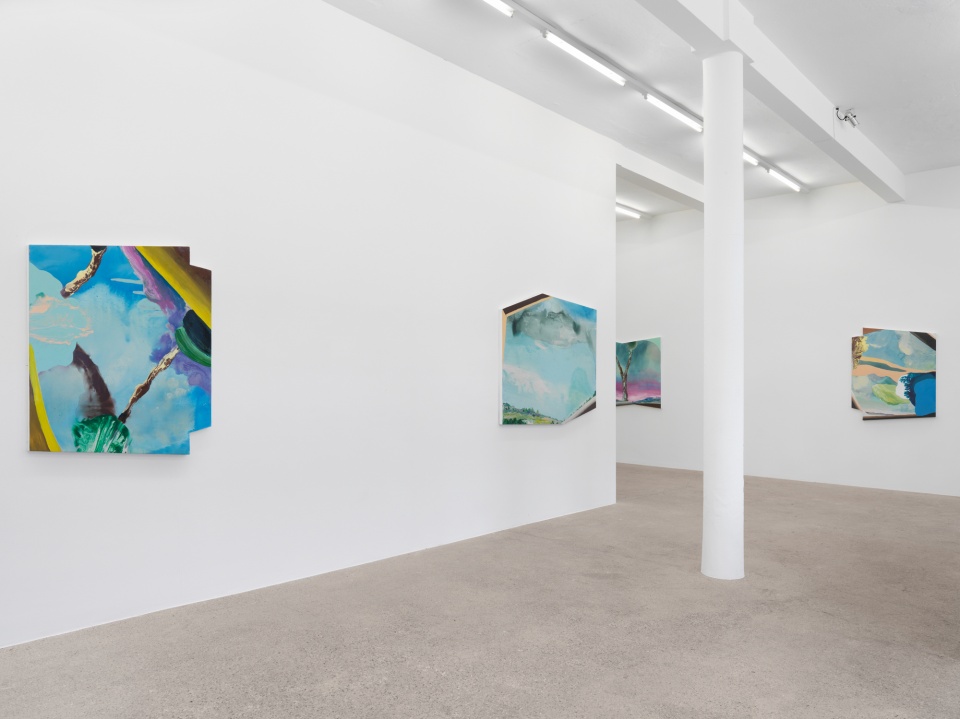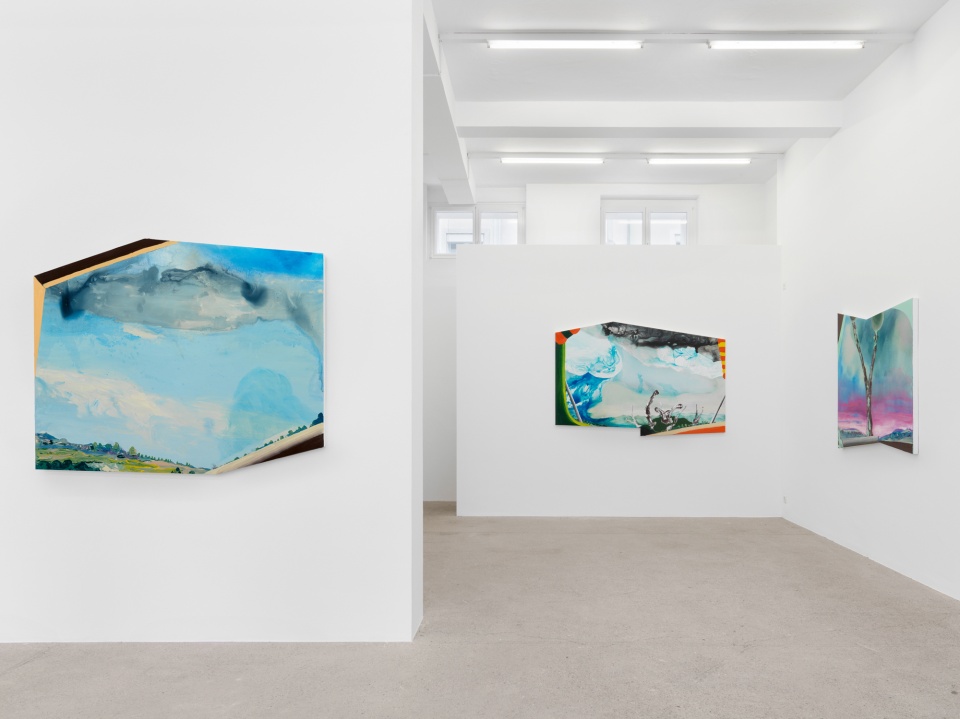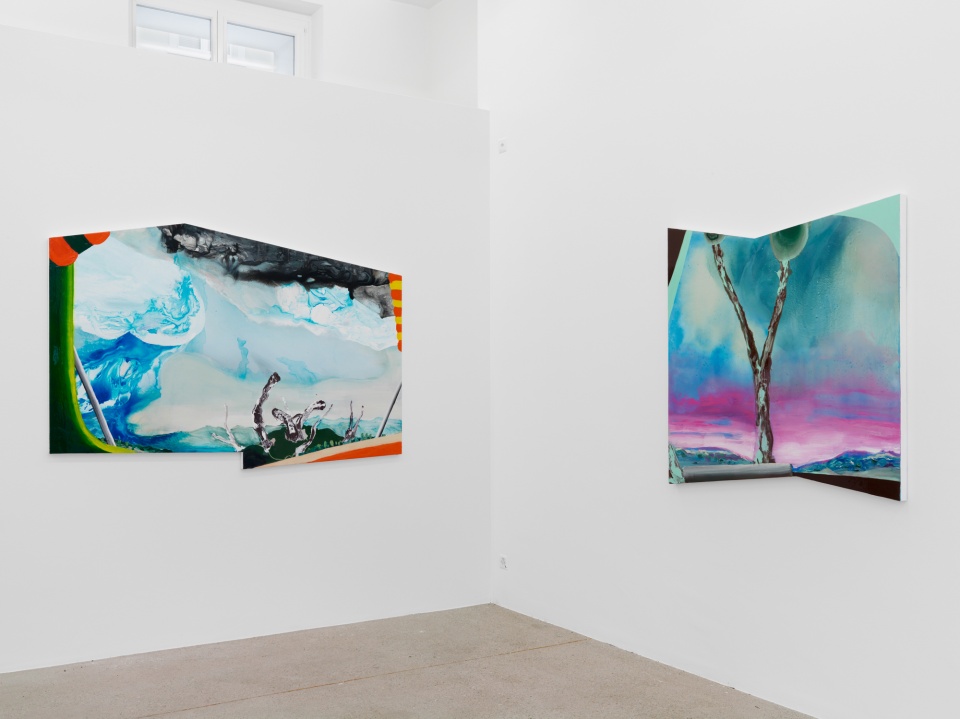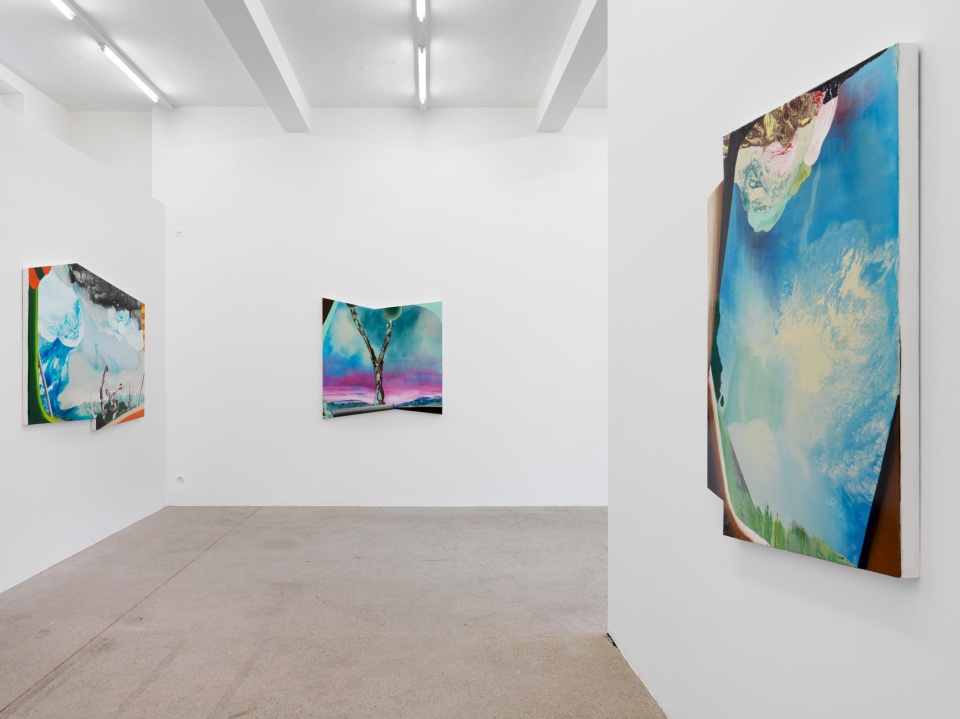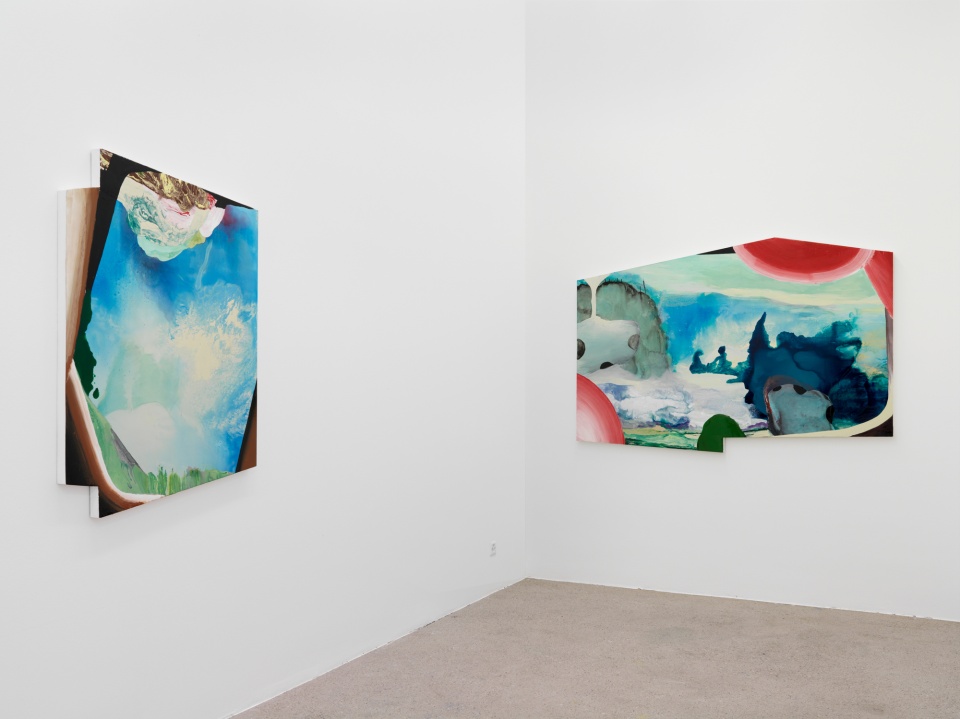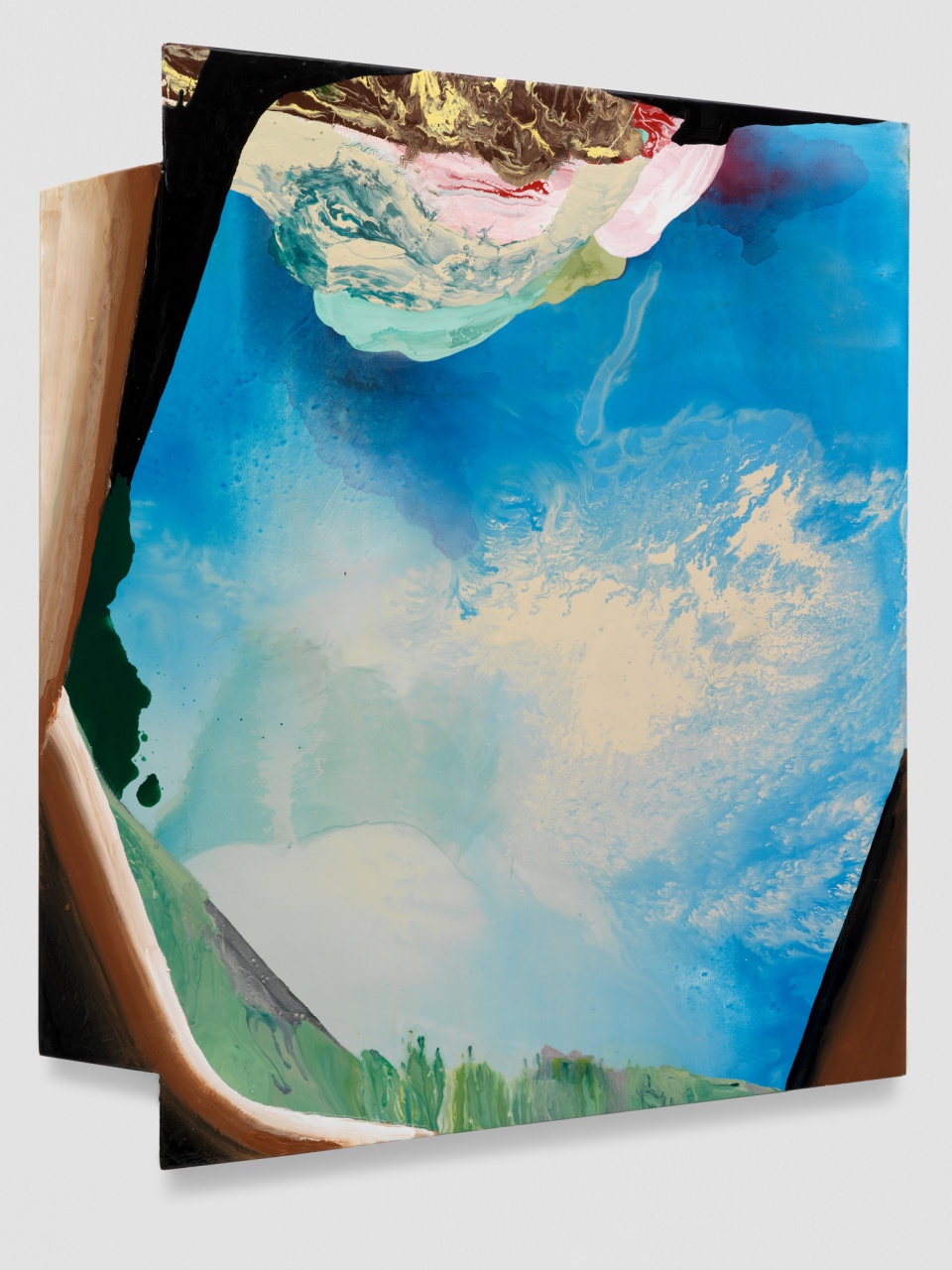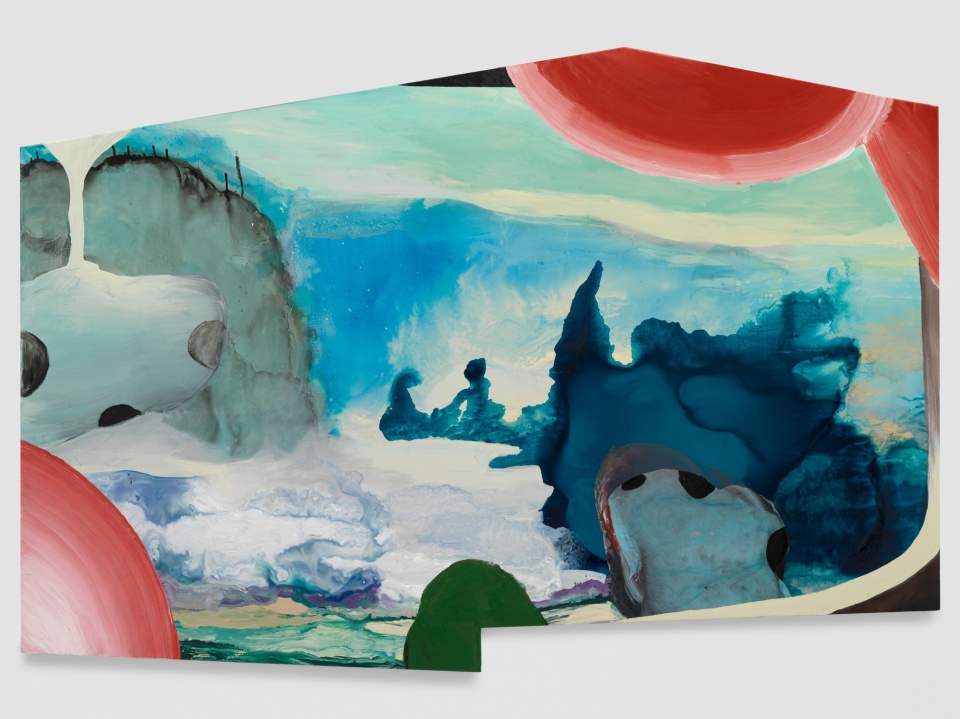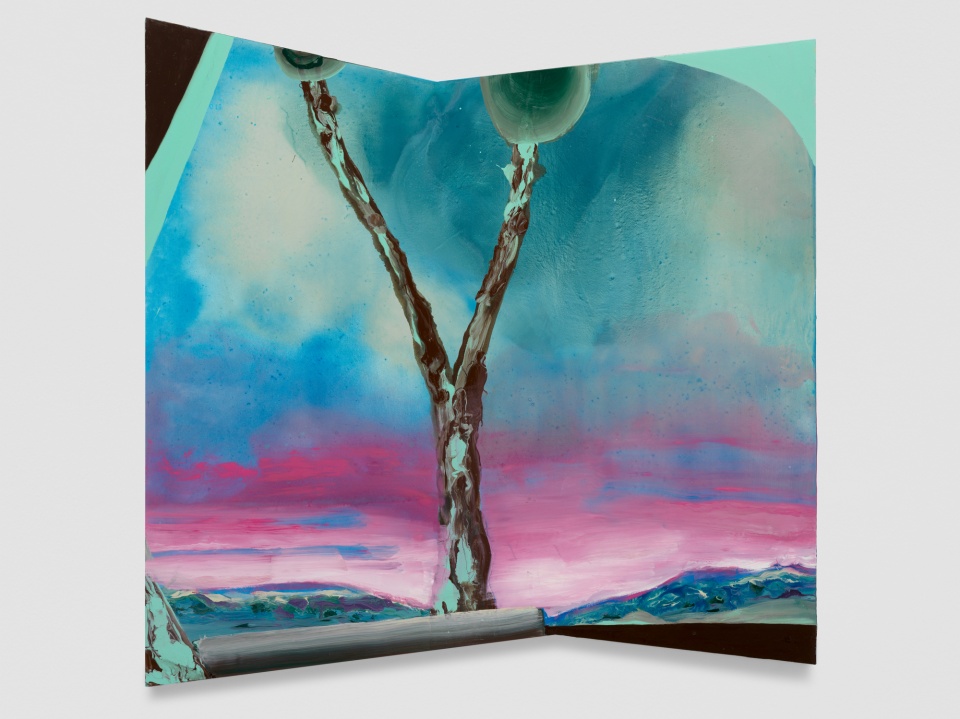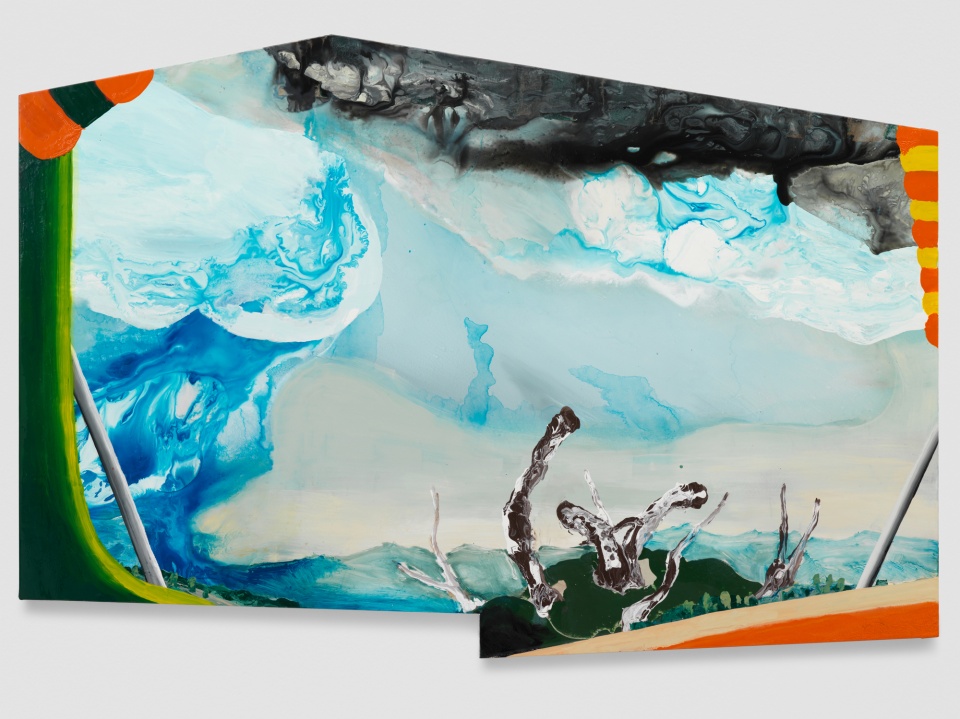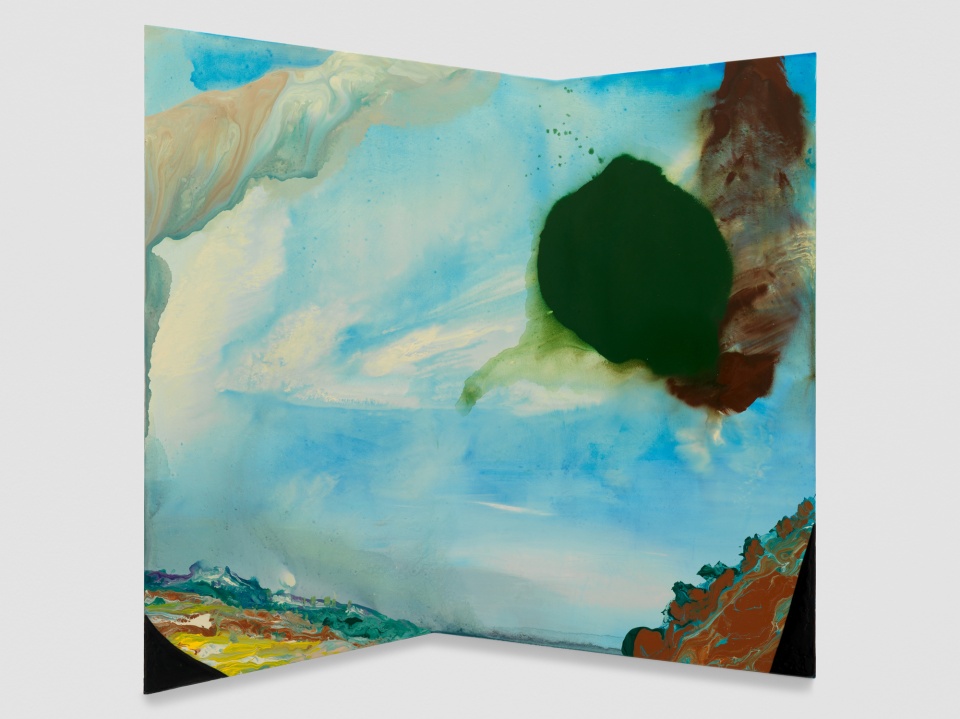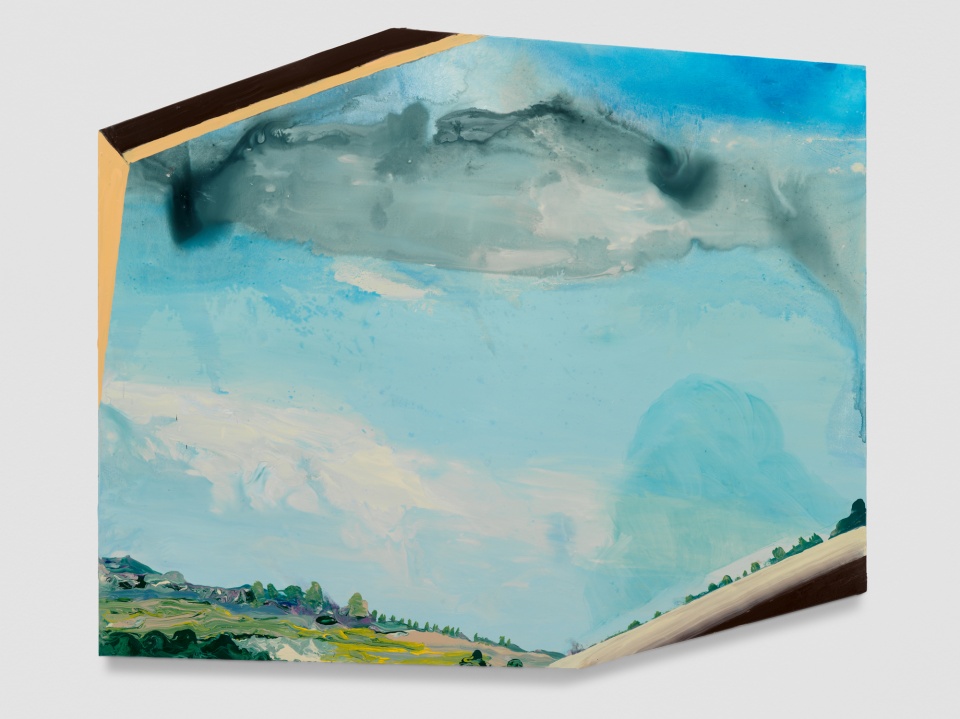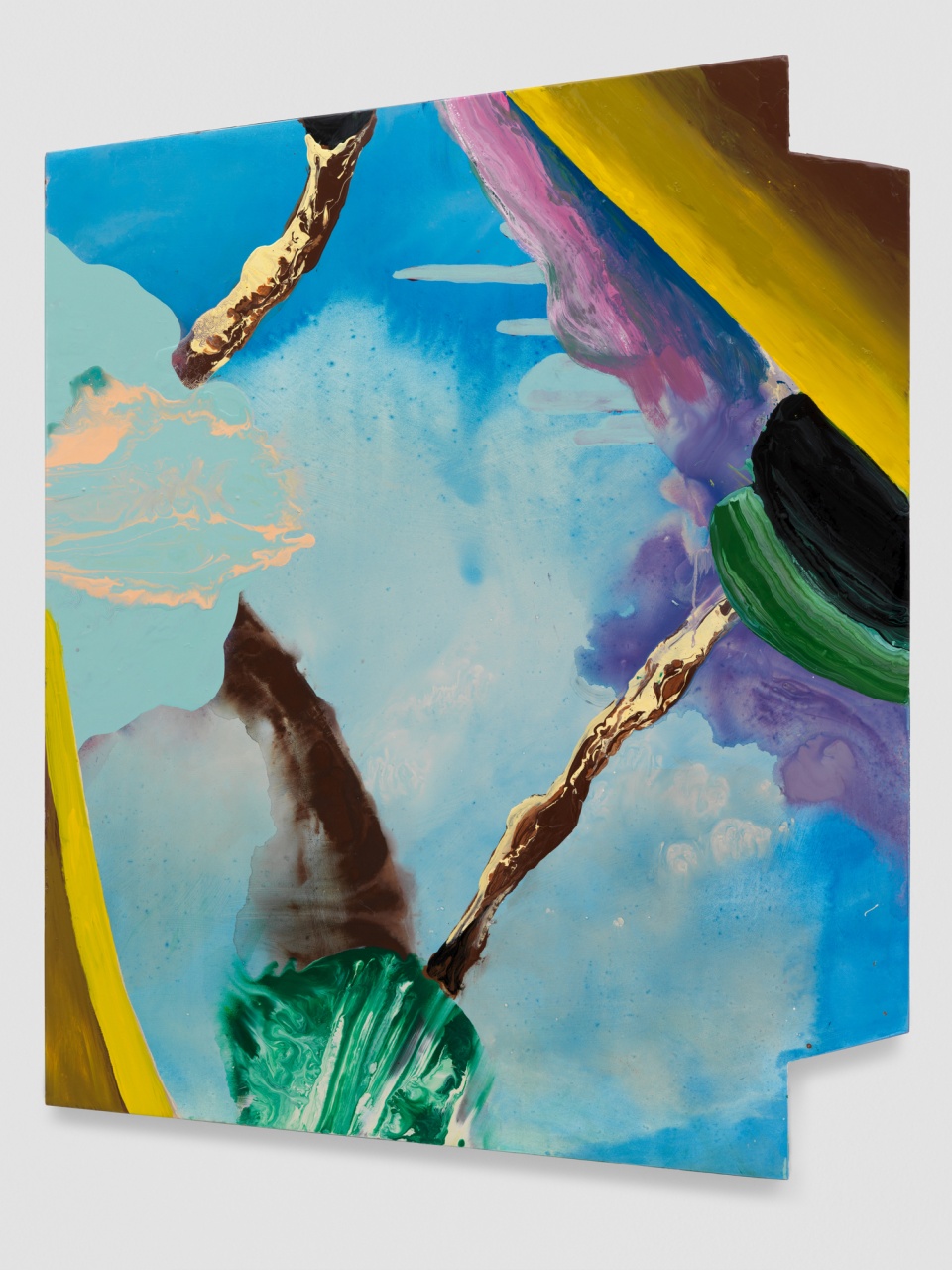Klodin Erb, 27 March 2015 – 16 May 2015
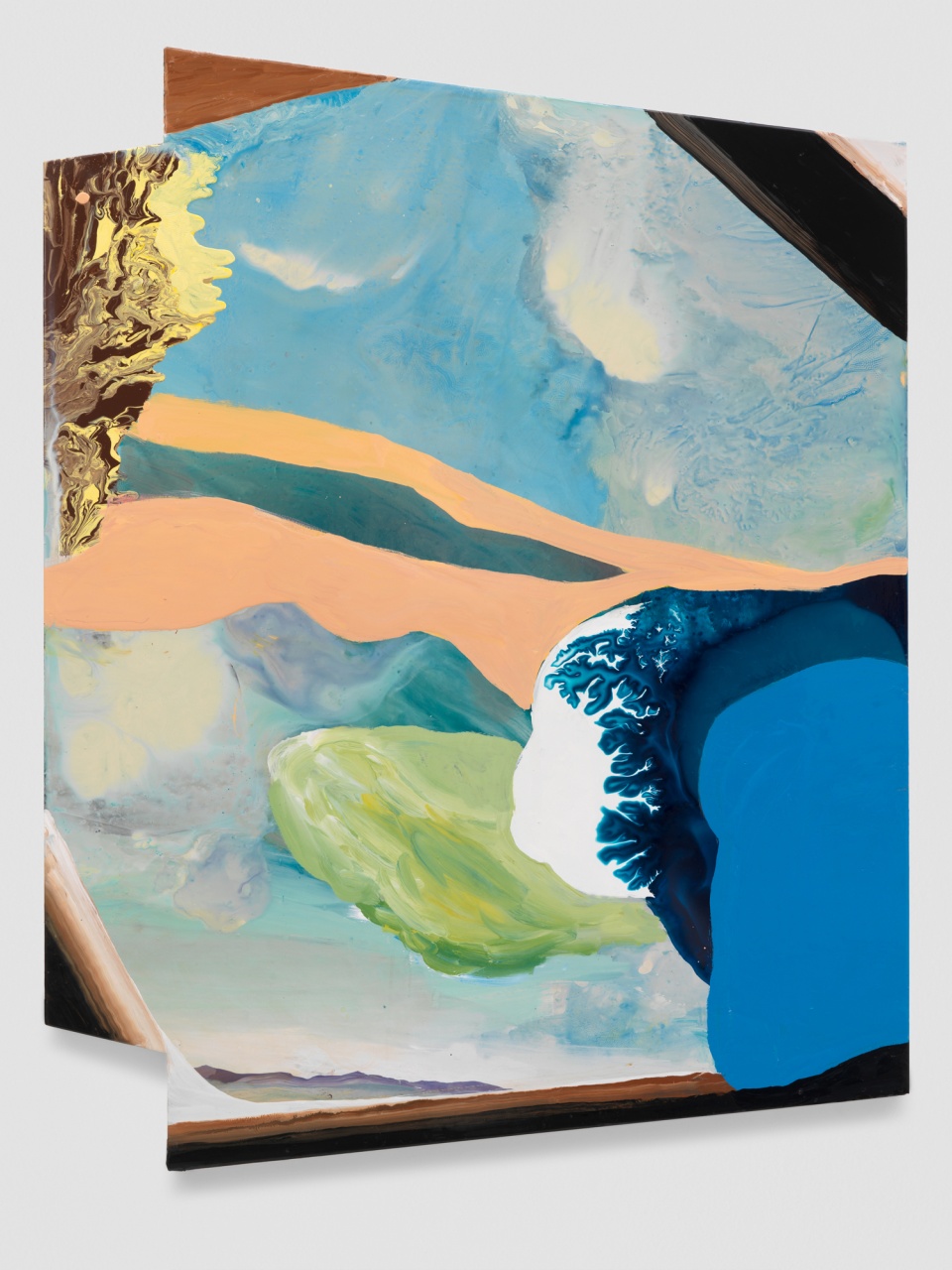
Klodin Erb
Am Anfang war die Farbe No 4, 2015
Synthetic lacquer paint on wood
130 x 100 cm (51 1/8 x 39 3/8 inch) (polygon)
Photo credit: Stefan Altenburger
March 27 - May 16, 2015
OPENING: THURSDAY, MARCH 26, 2015, 6 - 9 PM
Rotwand is very pleased to present Klodin Erb’s third solo exhibition with the gallery.
How does one today produce visual statements in painting that are not only socially relevant but also probe the currency and potential of the medium itself? As a painter, how does one position oneself within discourses on visuality and mediality, on cultural visual memory and individual visual experience? The artistic concerns of Klodin Erb have long centered on these questions, whereby the aspects of pictorial content motifs and painting as a processed-based artistic strategy are renegotiated with every new series of works. The works currently on view in the gallery make Erb’s approach all the more evident—in which she explores the visual topos of the “finestra aperta,” the view through the window, through unusual, experimental painting techniques.
In contrast to the culturally rooted metaphor of the window as a rectangular model for representing reality, phenomenological considerations are primary in Erb’s painting. The polygonal support, or “shaped canvas,” defines the space in which a painting reveals itself, or better said through which the painting shows how images of such an outlook might appear. The view is directed into a spatial situation in which the visible and the imaginary are merged, in which individual entities of painting interfere with one another, thus making visible the constructed nature of space—and in a metaphorical sense—the reality thereby evoked. What happens on the medium, the actions and painterly events inscribed on its surface, reflect the painter’s conceptual point of departure, without being subsumed by it. The predominating color is a matte, light blue, mixed with white, which is successively pushed into the background through the painting process—shifted into the distance. Islands formed by high-gloss enamel and elongated markings float on this ground. They punctuate the continuum of pictorial space and break up its spatio-temporal unity. Also the framing elements, serpentine growths, bubbling eruptions, and clear geometric markings are indications of a compositional ambivalence. Although certain components serve as repoussoir, they repeatedly undermine their stabilizing function, sometimes floating out of the image or expanding the pictorial space beyond its material dimensions.
The agility of the eye that Erb’s paintings demand mirrors the painting process itself, in terms of the materiality of the paint, its object-like presence on the medium, and the open-endedness with which Erb allows the paint to assert its own dynamic. Pouring, wiping, spreading the paint, lifting and tipping the canvas, Klodin Erb always uses a physical, time-based, and ultimately performative approach. Also central to this way of working is how Erb consciously plays the characteristic of different painting techniques off one another and waits to allow certain “effects” to take hold, intervening with a correction or, in some cases, a destructive cancelation.
The opulent sensuality of the works and their conceptual orientation, which in these paintings is expressed in the notion of the landscape as an idea, as a mental category, gives rise to an affective dimension in terms of how the works are viewed. In her paintings Klodin Erb enacts the fundamental conditions and effects of attraction, of physical-ideal appeal, which go above and beyond any aesthetic postulate or a purely intellectual engagement with the image. Installed in a linear row, the paintings, which all have the dimensions of 1.3 meters corresponding to the “normed” height of a window, recall a filmic moment, a road movie, in which the landscape passes by in a side window or disappears in the rear view mirror. Similar to these medially constructed visual realities, instances of what is taking place within the image are carried over into the “world in front of the canvas.” An unshakeable self-confidence is asserted by Klodin Erb’s paintings, a self-conception of images as desiring to be seen but not demanding this at any price.
Text Irene Müller
Translation Laura Schleussner

